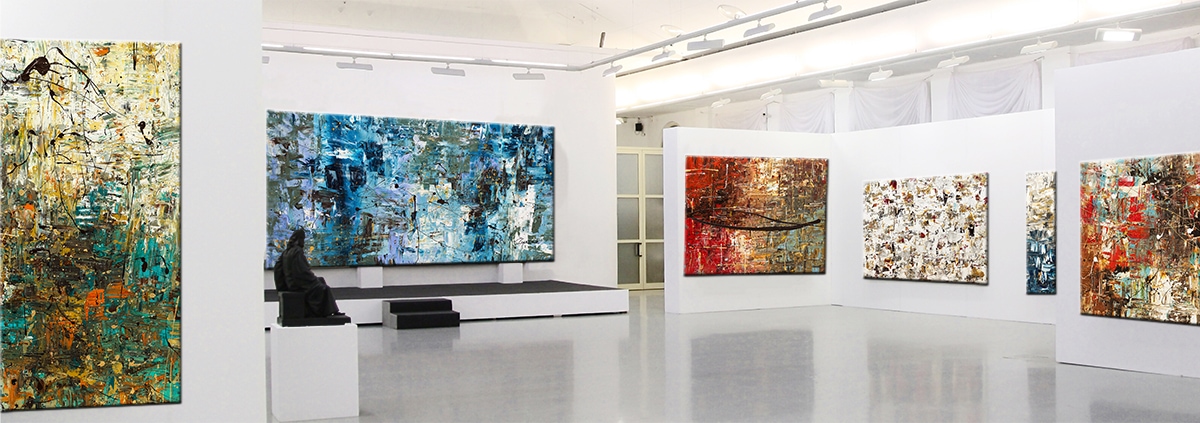NFTs: History, Characteristics, Types, How to Create, Buy and Sell Digital Art, NFTs vs. Cryptocurrency vs. Digital Currencies
What are NFTs? These are virtual tokens that grant ownership over many kinds of digital files and physical items — they are the bridge to the metaverse. They use blockchain technology to track ownership in a decentralized way, just like cryptocurrencies. But while tokens in a cryptocurrency are all the same, each NFT is unique. Artists are making money by creating digital art and selling them as NFTs that generate unique identifying codes — kind of like a virtual certificate of authenticity. Digital currencies (or CBDCs), are like regular fiat currency but digital, regulated by government.
Disclaimer: The following is for informational purposes only. It is not investment advice. For financial advice, seek a licensed professional. Also, cgmodernart.com is not associated with the authors of the video, has no control over their content and has not received compensation.
The term NFT (which stands for non-fungible token) has been grabbing headlines all year as they play an integral role in virtual identity, community, social experiences and present financial opportunities in the emerging metaverse. NFTs are selling for massive sums, and they are ushering in new opportunities for digital artists.
But despite the news coverage, there is still plenty of confusion about NFTs and their connection with Cryptocurrencies and Digital Currencies (CBDCs). It seems confusing and overly technical. So while we’ve all read plenty about them over the last year, many are still asking, “What is an NFT?”
And for artists and art lovers, there is still another question, “What do they mean for the art world?”
These questions are important to get right, because NFTs represent one of the biggest shifts in the art market we’ve seen for generations. These little packets of online information are allowing digital artists new ways to interact with the public and make a living.
That’s why we’ve assembled this guide to help you navigate this sometimes confusing new frontier of technology and art.
What is an NFT?

To understand what an NFT is, it can be helpful to breakdown the individual parts of the name:
-
- Non-fungible: Fungibility refers to items holding an exact value that can be exchanged evenly. When you have five one dollar bills, they can be exchanged for one five dollar bill. They can be exchanged for five different one dollar bills. In all this exchange, the value is exactly the same. But NFTs are non-fungible, meaning that each one is unique and can’t simply be exchanged for any other.
- Token: NFTs are tokens because they are managed on a blockchain. A blockchain is a method of maintaining a ledger without the need for a centralized institution. All the computers in a blockchain network add in information (in what are called blocks) and verify that the new info is correct.
An NFT is created by adding a block to a blockchain. That block is a bundle of info that is protected with cryptography. The block can link to a digital asset (like a song, work of art, or even a tweet), and that creates (or mints) an NFT.
To put it simply: NFTs are a way to sell ownership of something in a digital space that doesn’t require a central institution.
These NFTs can be sold after the fact. And they can also contain some interesting innovations. For instance, NFTs can ensure that the original artist gets a percentage of every resale.
SIDENOTE: Unless a separate agreement is made between the creator/original artist and the buyer, the copyrights to an NFT stay with the creator/original artist — at least per US laws. Every country has its own Intellectual Property (IP) regulations, so if you live in a different country, you may want to check the IP for your country.
The Metaverse
A metaverse is a network of 3D virtual worlds focused on social connection. In futurism and science fiction, the term is often described as a hypothetical iteration of the Internet as a single, universal virtual world that is facilitated by the use of virtual and augmented reality headsets. — Wikipedia
The metaverse is a virtual world where people can have an avatar (virtual identity) to socialize and buy digital items like clothes, cars and much more. In other words, the metaverse is an interoperable network of real time rendered in a 3D virtual world. For example, imaging using your profile picture (PFP) to go to a virtual shopping mall and being able to walk and buy clothes with your virtual friends.
Because the metaverse allows people to showcase digital artwork, collectibles and property, NFTs will allow them to buy and sell these items with a proof of ownership using the same blockchain technology that digital currencies use. Currently, there are some NFTs marketplaces like Opensea, Rarible and Immutable X, where you can buy digital items. Brands like Nike, Adidas, Gucci and Coca Cola have already jumped into the the NFTs world heading to the metaverse.
SIDENOTE: The movie Ready Player One, by Ernest Cline and directed by Steven Spielberg might be the best of what the metaverse could conceptually look like.
What are Cryptocurrencies and Digital Currencies?
A cryptocurrency is a digital or virtual currency that is secured by cryptography, which makes it nearly impossible to counterfeit or double-spend. Many cryptocurrencies are decentralized networks based on blockchain technology—a distributed ledger enforced by a disparate network of computers. — Investopedia.com
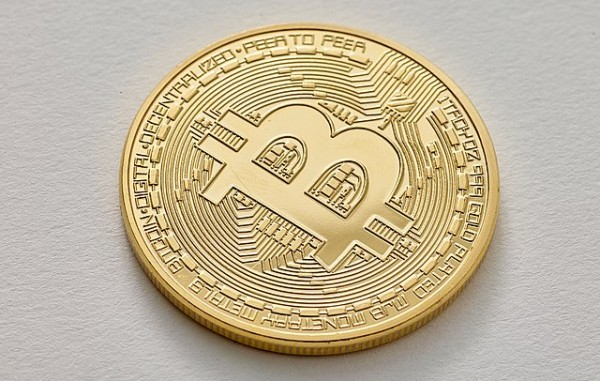
So is an NFT a cryptocurrency like bitcoin? No. Although these NFTs do use the same blockchain technology that cryptos use. The blockchain is able to track who has purchased an NFT, making sure that ownership moves from one user to another.
Most blockchains are decentralized networks. Anyone can join in and help run the network. Because of its structure, these networks are very difficult if not near impossible to hack, making them secure. And because there is no central institution that runs it, there are not the same privacy concerns that exist for much of the internet.
Cryptocurrencies like bitcoin use the blockchain as a public ledger to run a currency. That means every individual token has to be fungible, that way they can be exchanged easily. Similarly, NFTs use the blockchain to record what digital asset it is linked to and who owns it.
So blockchains are the core technology that run both NFTs and cryptocurrencies. And most NFTs are being made on the Ethereum blockchain, which runs a cryptocurrency as well (called ether – ETH).
Another way they are very similar is in their storage. With both NFTs and cryptocurrencies, you need what is called a digital wallet to store them. This is essentially a unique online address that the blockchain can register ownership to.
So while they are very intertwined, they are not the same thing.
A central bank digital currency (CBDC) uses an electronic record or digital token to represent the virtual form of a fiat currency of a particular nation (or region). A CBDC is centralized; it is issued and regulated by the competent monetary authority of the country. — Investopedia.com
So far, only a small number of countries, including China (Digital Yuan), have fully launched a digital currency. Other countries are in the developing process. Currently, NFTs transactions cannot be made on digital currencies due to the centralized mechanism.
NFTs vs. Cryptocurrency vs. CBDC

What are the differences between NFTs, cryptocurrencies, and digital currencies (or central bank digital currency, CBDC)?
NFTs and cryptocurrencies are similar in two ways:
-
- They both record transactions using blockchain technology, rather than relying on a central institution.
- Both also require a wallet — an online address where your NFTs or cryptocurrency is stored.
But NFTs and cryptocurrencies have key differences:
-
- Every token in a cryptocurrency is exactly the same as any other (fungible). This allows them to be exchanged easily.
- NFTs are connected to a digital asset, and the value of any individual NFT is independent, based on the value of the underlying asset.
So then, what is a CBDC, and how does it compare to a cryptocurrency? This becomes easy to see once we examine how a CBDC works:
-
- CBDCs are currencies that exist entirely digitally.
- CBDCs are run by central banks, rather than using a blockchain to manage a public ledger.
- The value of a CBDC is based on a real currency.
- CBDCs are controlled by central authorities, both the central bank that runs them and the governmental regulatory agencies responsible for them.
CBDCs are much more like the money in your pocket, just in a digital form. While cryptocurrencies use a decentralized network to manage them.
Meanwhile, NFTs are not a currency at all. They use the same technology as cryptos to track ownership and verify exchanges, but each individual NFT is unique.
History of NFTs and Blockchain Technology
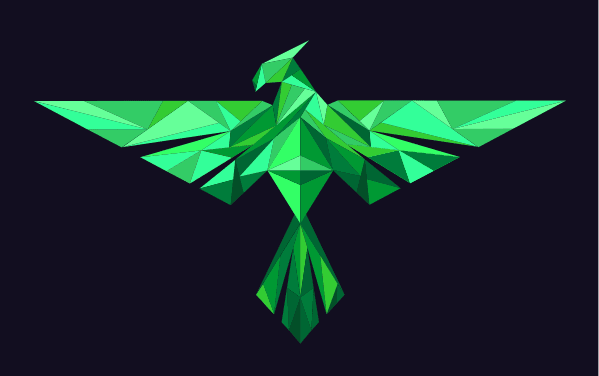
You can’t understand the history of NFTs without grasping the history of blockchain technology as a whole.
The blockchain era began in 2009, when an individual (or group of people) going by the name of Satoshi Nakamoto introduced bitcoin to the world.
But the core idea appeared long before that in a 1982 dissertation by David Chaum.
With bitcoin, however, the blockchain finally found a way to grab the interest of a large group of people, and users started joining the network en masse. Those who joined began creating and validating blocks (called mining). Because of the scarcity built into bitcoin, prices began to rise, driving still more interest.
Soon, many other groups innovated on the core ideas, producing a sprawling selection of new blockchains. These blockchains can be used for a variety of purposes, but cryptocurrencies still stand out as the most popular application.
NFTs first appeared on May 3, 2014. During the Seven on Seven conference, Kevin McCoy and Anil Dash created the first ever NFT in front of a live audience. A little over a year later, Etheria launched a project to create NFTs on a mass scale.
The resulting blockchain Ethereum made it easy for users to create their own NFTs. There was some interest (consider CryptoPunks and CryptoKitties, which we’ll talk about in a later section), but NFTs did not immediately set the world on fire.
It wasn’t until 2020 that NFTs took off. This was helped by major companies like Nike and the NBA creating their own NFTs.
In early 2021, artists began grabbing big money for their self issued NFTs. A new era in art had officially begun. Soon, there were NTfs for sneakers, songs, and so many other kinds of digital assets.
Today, there is a huge selection of places to make and sell NFTs—not to mention the oceans of individual NFTs now available for purchase. The market for these assets is now estimated to be in the billions.
Characteristics of NFTs

Since each NFT is secured by a cryptographic key that cannot be deleted, copied or destroyed, it enables the robust, decentralised verification – of one’s virtual identity and digital possessions – necessary for metaverse society to succeed and interact with other metaverse societies. — Financial Times
NFTs have a few characteristics that make them stand out as digital assets, especially from their cryptocurrency cousins.
NFTs and cryptocurrencies are similar in two ways:
-
- Indestructible: NFTs are permanent digital assets. Unlike a physical work of art that can break, be burned, or meet any number of calamities, an NFT lives forever in the blockchain. And as you should know, physical art does need to be taken care of, unlike an NFT.
- Connected to an asset: NFTs are unique because they are linked to a specific asset. These assets differ, making each NFT one of a kind. While these assets are linked to it, they aren’t the same thing as an NFT, which only proves non-copyright ownership.
- Indivisible: Being linked to an asset also means that NFTs can’t be divided up. While most cryptocurrency tokens can be divided into many units, an NFT cannot. That indivisibility helps maintain the original value.
These characteristics mean that NFTs change in value based on the perception of the individual NFT. That’s the whole reason that artists began using them. They can be individually priced, unlike cryptocurrencies, where the value changes as a whole.
What Can Be an NFT?

Something that makes NFTs particularly attractive to artists is the wide variety of assets that can be turned into one.
The list includes:
-
- Image files (like digital paintings and GIFs)
- 3D art files
- Videos
- Audio clips
- Trading cards
- Memes
- Tweets
- Virtual real estate
- Fashion (as a way to prove your expensive, name brand item is not a knock off)
- Tickets to events (like concerts or festivals)
- And many, many more
The versatility of NFTs make them attractive to a wave of speculators looking to get in on the next big thing. But while that wave of speculation might make for some rocky patches ahead, the diversity of uses means that, in the long term, NFTs are likely here to stay.
Buying NFTs vs. Traditional Art Buying
What is the major difference between buying an NFT of a work of art versus a more traditional form of art buying?
Well, when you buy a painting or a sculpture, you get to take it with you. The painting is one of a kind, so you are the only person who has it. (If you’d like more information on buying art the traditional way, read this.)
But when you buy an NFT for a digital work of art, it’s a much different process.
Because it is a digital asset, it can be near infinitely replicated and shared. Your NFT is not a copyright, and it in no way gives you control over the image. An NFT is more like purchasing a certificate of authenticity for a painting, rather than the painting itself — so the copyrights stay with the original artist.
That might sound a bit fuzzy, and it is right now. We still do not know how the market will shake out. After all, we’re in the early stages. But what we do know is that digital artists are finally able to sell work directly to customers in an easy, transparent way. This breakthrough makes it likely that while the world of NFTs might change in the coming years, it won’t go away.
SIDENOTE: There is still some hesitation across the traditional art market regarding NFTs. It’s a completely new concept of buying art, and only time will tell how it integrates into the larger market.
But it doesn’t have to be one or the other. In fact, there are some ways that these two worlds can work together. Since NFTs are a verifiable, secure way to track authentic ownership, they might soon come to replace paper certificates of authenticity.
Art Collecting and NFTs

Hands down, one of the most interesting applications for NFTs is for buying and selling digital art.
The most expensive art NFT so far is Beeple’s Everydays: The First 5000 Days. It sold for a whopping $69 million in March 2021 at Christie’s. Beeple has, more than perhaps any other artist, taken advantage of this new form of art selling. He’s sold multiple works over the half million mark. His all-NFT auction helped launch the term into the mainstream.
Other famous examples of art NFTs include Nyan Cat by Chris Torres. This GIF of a half cat, half pop tart flying through space with a rainbow trail netted 300 ether (about $600,000) at auction. The GIF, which went viral after its creation in 2011, was turned into an NFT in commemoration of its 10th anniversary.
And the strange stories don’t stop there. FEWOCiOUS, an 18-year-old from Las Vegas, sold his work The EverLasting Beautiful for $550,000. That means he might be the youngest NFT mogul yet.
Before the major wave of NFTs over the past year, CryptoPunks and CryptoKitties were already making history with these unique tokens.
CryptoPunks is an art project released in the summer of 2017, making it an early NFT on Ethereum. The developers made 10,000 characters generated out of several traits, some more rare than others. These are now digital collectibles, complete with a secondary market for collectors.
CryptoKitties is another early NFT experiment, released in late 2017. It is an interactive game where players can buy, breed, and sell cats. At the height of its popularity, transactions related to CryptoKitties slowed down the Ethereum network to a crawl.
In 2021, Fidenzas and Bored Apes have been the most wanted and sold for a lot of money.
Fidenzas, probably one of the most attractive digital art in 2021, created through high-quality generative algorithms by Tyler Hobbs.
Bored Ape Yacht Club, a collection of 10000 unique and cool looking bored apes that live in the Ethereum blockchain.
All of these projects are examples of how blockchain technology can be used for many purposes, not just cryptocurrencies.
These uses of NFTs for art and game projects makes this technology a potential major player in the future of the art market. It allows anybody, with a fairly small amount of technical knowledge, to mint and sell their art in a lively marketplace.
But how do you mint an NFT? More on that in the next section.
How to Create NFTs
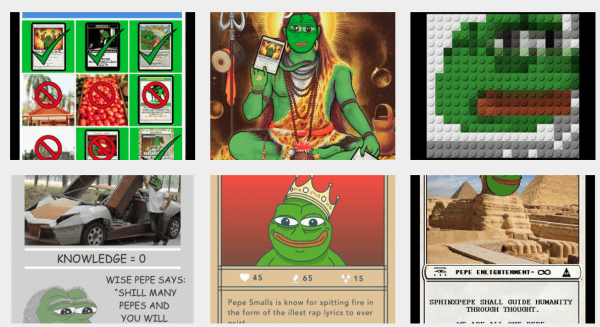
If you are interested in getting into this new frontier, there is good news: anyone can create and sell NFTs.
The three step process is fairly straightforward:
-
- First, you’ll need to settle on a blockchain to mint your NFT on. This will be the network that issues your NFT and tracks its ownership. While there are plenty of options, Ethereum is still by far the most popular. But it is worth researching other avenues, like EOS, WAX, Cosmos, or Binance Smart Chain.
- You’ll also need to set up a wallet that is compatible with the blockchain network of your choice.
- Now, you’ll want to find a marketplace. You’ll connect your wallet to the marketplace and simply upload the digital asset that you want to create an NFT for. Mintable, OpenSea, and Rarible are the largest. These platforms are incredibly easy to use and intuitive, making the process a breeze.
Pretty simple, right?
It can also be free. Platforms like OpenSea charge nothing, although many other marketplaces have fees. These fees are usually tied to network use (called gas), meaning weekend fees are lower than during the work week.
Where to Buy and Sell NFTs
To sell your newly minted NFT masterpiece, you’ll use the same platform that you uploaded your file to. In these, you can also choose to receive royalties. That means every time an NFT is resold, you’ll get a percentage of the sale.
These are also the same places where you can buy your NFTs. All you need is to own cryptocurrency that the platform accepts.
Some of the top NFT marketplaces are:
NFTs and the Environment

Are NFTs bad for the environment? The answer isn’t very cut and dry.
There has been a lot of news about the environmental impact of bitcoin. Emissions related to the mining of bitcoin have leaped up to nearly 60 million tons of carbon emissions per year. That’s about as much as a small industrialized nation.
You might think that doesn’t make sense. Isn’t all of this online?
The problem comes down to how bitcoin runs its blockchain. To create new blocks, users have to solve increasingly difficult mathematical problems. The user who can solve the next mathematical problem first gets a reward in the form of a small sum of bitcoin. This system is called proof of work (POW), and it keeps the network safe.
But in order to get more bitcoins from solving these math problems, users entered into an arms race. They began building huge supercomputers out of graphics cards and specialty built machines, running day and night. Users even banded together to build ever larger and more powerful computers.
All of these whirring computers running at high capacity for months on end use a lot of electricity. And most electricity ultimately comes from the burning of fossil fuels.
Other blockchains have innovated to avoid these outcomes. Proof of stake (POS) is a system that demands considerably less computer power, relying instead on users risking an amount of cryptocurrency to create the next block. This remains the most popular alternative to proof of work.
So NFTs that run on proof of work blockchains do require a great deal of energy to maintain. But many blockchains use less environmentally damaging methods. For instance, Ethereum, the most popular blockchain for NFTs, is moving over gradually to proof of stake. Cardano (ADA), another promising blockchain project with smart contracts, is being developed as proof of stake.
SIDENOTE: Large POWs miners are finding ways to use renewable energy that are environmentally friendly. For example, wind, solar, biodiesel, geothermal energy, hydropower, hydrogen and fuel cell energy. You can read the Bitcoin Miners Navigate Extreme World of Crypto Power-Hunting for more information.
Are NFTs Good Investments?

Digital art has long been undervalued, in large part because it’s so freely available. To help artists create financial value for their work, NFTs add the crucial ingredient of scarcity. For some collectors, if they know the original version of something exists, they’re more likely to crave the “authentic” piece. — Time Magazine
A lot of ink has been spilled over the relative merits of investing in cryptocurrencies and NFTs. And it’s easy to see why people are concerned.
Especially with NFTs, wide adoption is so new that no one can say for certain what will happen in the future.
People buying NFTs for millions of dollars might never see that money realized at a resale. Only time will tell if NFTs can hold and increase in value the way their real world counterparts (like art and some collectibles) do.
Nevertheless, people continue to invest in them.
Why? Probably because a lot of money is moving through NFTs right now. Of course, that money isn’t guaranteed to last.
If you are interested in buying or collecting art, you can always go the traditional route. Check these great extra-large original abstract paintings for sale.
Over time, we’ll get a better sense of how safe or volatile NFTs are as an asset.
Tax Implications

Say, David purchased a NFT valued at $2,000 (1 ETH) in January 2021. To make the purchase, he used 1 ETH purchased at $200 several years ago. When he purchases the NFT in January, he would incur a long-term capital gain of $1,800 ($2,000 – $200). This is considered long-term because he held the ETH for more than 12 months before disposing of it to purchase the NFT.— Forbes
So you want to jump into NFTs? If all goes well, you might end up making money by selling and reselling these tokens. If that happens, are you going to owe taxes?
Yes! Any crypto-to-crypto transaction is taxable (per the Internal Revenue Service of the United States – IRS). So if you purchase an NFT with a cryptocurrency, such as bitcoin or etherium (BTC or ETH), later you trade the NFT for another NFT, or sell the NFT for a cryptocurrency, you would have to pay taxes.
In most parts of the world, financial gains from NFTs are subject to tax. In the US, that falls under capital gains tax. They also likely fall under the same guidance as cryptocurrency profits.
SIDENOTE: Some of the most crypto-friendly countries for taxes and capital gains, are Portugal, Switzerland, Germany, Singapore, Malta, Malaysia, Belarus, Cyprus and Bermuda.
Play-to-Earn: Play Video Games to Earn NFTs
There is one other aspect of NFTs that is shaking up an entire industry — video games.
In the play-to-earn model, a game will reward players with in-game assets. These could be cool weapons, interesting skins, or any number of items. NFTs allow players to mint these in-game assets as sellable tokens.
Some games are even directly paying players in cryptocurrency. The total amount you can earn in a month exceeds the equivalent of $1,000 a month for some games. That’s become a lucrative prospect for gamers, especially in economies where $1,000 goes very far.
This new trend has seen many gamers quitting their jobs to play full time, earning cryptos and in-game assets that they can then sell. In the Philippines, gamers turned to this alternative during the economic shocks from COVID-19. The game Axie Infinity, which allows players to swap in-game currency for crypto and NFTs, is a viable way for players to earn money when other opportunities dry up.
Watch this 30 seconds video filmed in January 2021 in a rural province north of Manila, Philippines:
The Future of NFTs
NFTs have experienced a meteoric rise in popularity recently. They’ve proven useful for digital artists especially, allowing them to sell their work to the public in a decentralized way.
That is good news for both art sellers and buyers.
On top of this, they’ve been used to create collectibles (like CryptoPunks, Bored Ape Yacht Club and NBA trading cards), run interactive games (like CryptoKitties), and even create a revenue stream for meme makers.
But where is all of this leading?
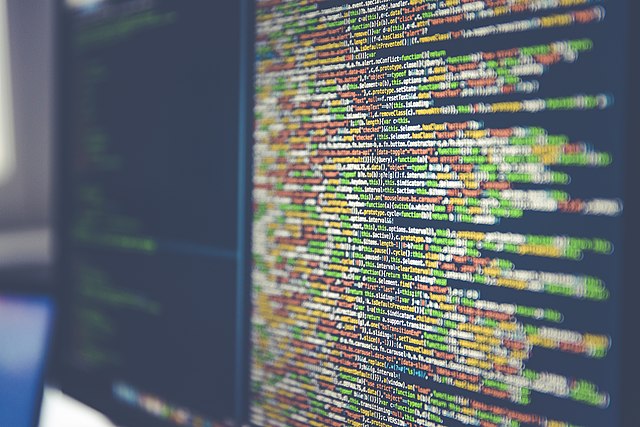
It is hard to say right now. We are still in a highly experimental phase, with creators and developers discovering new ways to use this technology. That makes it particularly interesting and worth keeping an eye on—even if you aren’t ready to start minting NFTs yourself. Potentially, the metaverse and NFTs will become an essential part of Web 3.0, an era where businesses will grow into the digital space.
If cryptocurrencies like bitcoin and dogecoin are any indication, blockchain technology has a history of keeping users engaged. And while there are many examples of cryptocurrencies with unsavory track records, by and large these platforms remain popular and trustworthy.
What is clear is that NFTs are not ways to easily make free money, despite the hype. They are also not sure bets. After all, what is? But they are a technology that is allowing people to sell assets online.
Because of the features they allow, like providing royalties to an artist indefinitely, they might also become an important part of real life asset markets.
Whatever the future holds for NFTs, we have certainly not seen the last of them.
In the meantime, visit the original abstract art site, to purchase gorgeous abstract paintings for your home or office.
PLEASE SHARE THIS:

